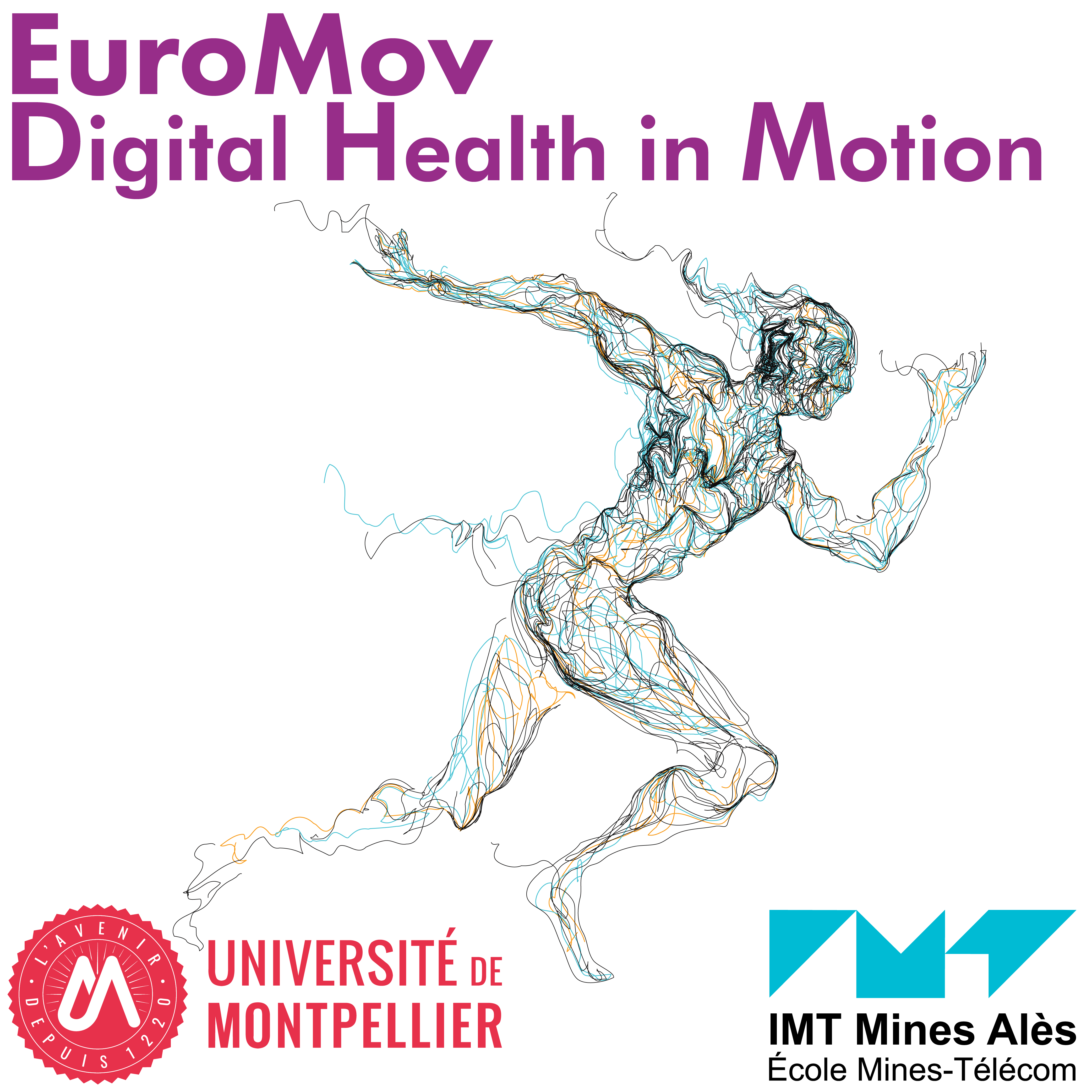EuroMov DHM
PIAS
Perception In Action & synchronisation
Key words
Action-perception synergies, synchronization, perceptuo-motor deficiencies, emotion, computer vision, motion capture, natural and artificial perception

PERCEPTION IN ACTION & synchronisation
Main objective
The fundamental and clinical research we do in PIAS is at the crossover between movement sciences, health sciences and computer sciences (images and sounds). These domains interact to focus on one main objective: Uncover the laws governing human perception in moving agents (Perception in Action) and human-environment synchronization in general.

This figure illustrates the interdisciplinary approach adopted in PIAS. We focus on how the numerous degrees of freedom composing the high dimensional elementary spaces (information gained from external and/or internal sensors) are compressed into low dimensional control structure. These structures produce stable yet flexible behaviours when we stand, reach, locomote, orient or manipulate. In our approach, we investigate interactions between inputs of the control structure (senses and/or psychological functions) and motion actuators (muscles, joints, segments, etc.).
Scientific orientations
The main PIAS orientation relates to the understanding of the complex circular causality between perceptual and motor components, between biological and psychological states during goal-directed human movements, in the physical, technological, and social environments, including with artificial agents.
PIAS makes three a priori choices regarding (i) conceptual guidance, (ii) types of experiments, and (iii) data acquisition and analyses. For (i), non-representational approaches of human perception and motor control are guiding our research programs (e.g., enactive, embodied, ecological, and dynamical approaches to perception and action), searching for regularities in action-related perceptual patterns as support for an efficient control, and rehabilitation, of our daily movements. For (ii), we balance regular experiments in the lab involving a small number of healthy adults, athletes, and/or patients tested in controlled experimental conditions (e.g., patients suffering from mental health disorders, Parkinson disease, sleep deprivation as well as visually impaired patients) with natural evaluation studies in the ecological context of daily life involving the recording of a large number of participants outside the lab. For (iii), we cover the entire data acquisition and processing chain from capture of relevant environmental characteristics and human movements to algorithms for optic flow and 3D motion measurements, video object detection and tracking, people and scene recognition. Our research is focused on artificial vision and artificial intelligence with the aim of understanding human embodied perception and producing innovative models for perception and action.
Interdisciplinary transversal scientific questions
At the interface of our scientific orientation, our choices, and our objectives resides our main questions and research projects:
(i) extracting lawful regularities in the (optical, acoustical, inertial, and mechanical) flows of information resulting from the active interaction between the observer and the environment, and demonstrating, in real and virtual scenarios, that these regularities are both the consequence and the cause of a successful regulation of behaviour;
(ii) understanding of pattern emergence and stability in social perceptual motor synchronization, in dyadic (N=2) and group (N>2) situations, including in emotional contexts;
(iii) identifying the consequences for rehabilitation of patients suffering from social (e.g., schizophrenia), perceptuo-motor (visually impaired patients), and neural disorders (e.g., Parkinson disease), with the ultimate goal to design and test innovative technology-oriented rehabilitation solutions.
These scientific questions are tested in basic and clinical research projects, relying on several complementary conceptual approaches, methods, and data recording and analysing tools from Movement (Univ. Montpellier), Health (BEAUSOLEIL, CHU), and IT (IMT Mines Alès) domains. Our research projects are developed in two complementary areas: Social perceptuo-motor synchronization (SYNC) and Action-based information for performance enhancement (FLOW).
